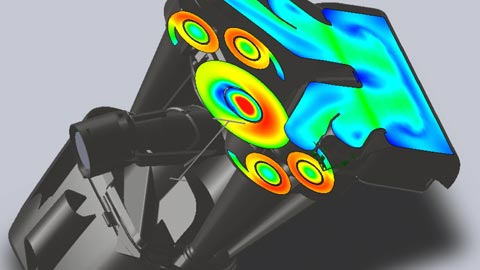Adopt open PLM systems that supports multiple CAD and ERP tools
Adopt open PLM systems that supports multiple CAD and ERP tools

Case Study
Growth through innovation
Groupe SEB
Siemens Digital Industries Software technology drives Groupe SEB’s enterprise-wide knowledge-sharing strategy; enables 43 percent increase in new product introductions annually
The role of innovation in Groupe SEB’s rise to fame
With a market presence in 150 countries, Groupe SEB is a leading manufacturer of small domestic equipment. In fact, every second, six products from Groupe SEB are sold somewhere in the world.
Originally, the Seb brand earned its reputation thanks to its famous “pressure cooker,” which has been whistling in the world’s kitchens for almost 60 years. Today, the company is a multinational enterprise, employing 23,000 people. Its history has been marked by external growth, with the acquisition of approximately 20 brands, including Rowenta, Tefal, Moulinex, Krups, Lagostina, and All-Clad. In addition, a major corporate initiative has led to worldwide leadership in the field of small household appliances through three product lines: cookware, kitchen electrics, and home and personal care.
Of course, all of this was not achieved in a single day. The company adhered to a clear but demanding strategy of continuous innovation to become a worldwide leader and sustain that position amid extremely competitive and constantly changing markets. Groupe SEB’s strategy is exemplified by compelling metrics. Every year the company introduces 200 new products, while filing hundreds of patents. Among recent investments, the company funded 700 employees in its research and development (R&D) departments, with a budget of €64 million.
PLM supports Groupe SEB’s innovation strategy
An important factor in Groupe SEB’s growth has been its ability to absorb different acquisitions, while retaining their innovation potential. Each of the Groupe SEB’s brands had its own special identity when first acquired, as well as its own development processes, a local product data management solution (often restricted to the technical side of the business) and a culture that was naturally shared across its workforce.
With this in mind, in 2003, Groupe SEB redirected its business model. It shifted from a brand-oriented strategy to a product line-based strategy. To achieve this, it had to move towards a cross-discipline organizational structure that would unite its different design and production units. It also had to adopt virtual development platforms to enable engineers – who were often long distances apart – to collaborate on the same project.
The goal was to enable its project teams to work on different brands in a knowledge-driven manner. Once implemented, this approach – which Groupe SEB intended to realize through product lifecycle management (PLM) technology – would enable the company to conserve the consistency of content development on a product line basis. Importantly, it would also allow the company to retain the differentiation that distinguishes each brand and ensures its attraction to its target market. In addition, the approach would facilitate economies of scale, enabling the company to pool its R&D activities. At the same time, it was necessary to audit, assess, optimize, and then harmonize multiple business and product development processes across the different worldwide sites. Finally, the PLM approach was adopted to facilitate a co-design process, where product components with a low-added or non-strategic value were actively sourced to various outside vendors.
The overall restructuring initiative required a unifying PLM solution. This represented a real challenge, given that when it was proposed, the concept was only in the outline stages. The success of the pilot project, implemented at Groupe SEB’s site in Lyon, France, validated the concept. Siemens Digital Industries Software’s Teamcenter® software was used to demonstrate the capabilities of PLM and was subsequently adopted to support the group’s overall innovation ecosystem. From that point on, Groupe SEB’s innovation strategy would be deployed using Teamcenter as the unifying PLM tool.
Large-scale PLM deployment
Today, Groupe SEB has 100 CAD stations using NX™ software, 60 CAD stations using Solid Edge® software, both from Siemens Digital Industries Software, and a centralized Teamcenter database in France that manages the overall PLM environment. In this setup, Teamcenter functions as a collaborative geometric dimensioning and tolerancing (GD&T) tool that manages all CAD files from NX and Solid Edge, as well as Pro/Engineer® software used by some of the group. Teamcenter also manages all of the technical data and other documents linked to product development. Teamcenter is directly connected to SAP, the enterprise resource planning (ERP) tool that is widely used within the company.
As a result, all departments that are in direct contact with product development access the central PLM database via Teamcenter, including the group’s marketing, engineering, planning, quality control, and purchasing departments. “More than 1,000 people access project data every day,” says Olivier Gomas, head of the group’s PLM operations in the Information Systems Department. “They do so from different French entities and also from Asia and America. Since this access is totally safe and available on a permanent basis, it enables all players to collaborate using highly reliable project data.”
